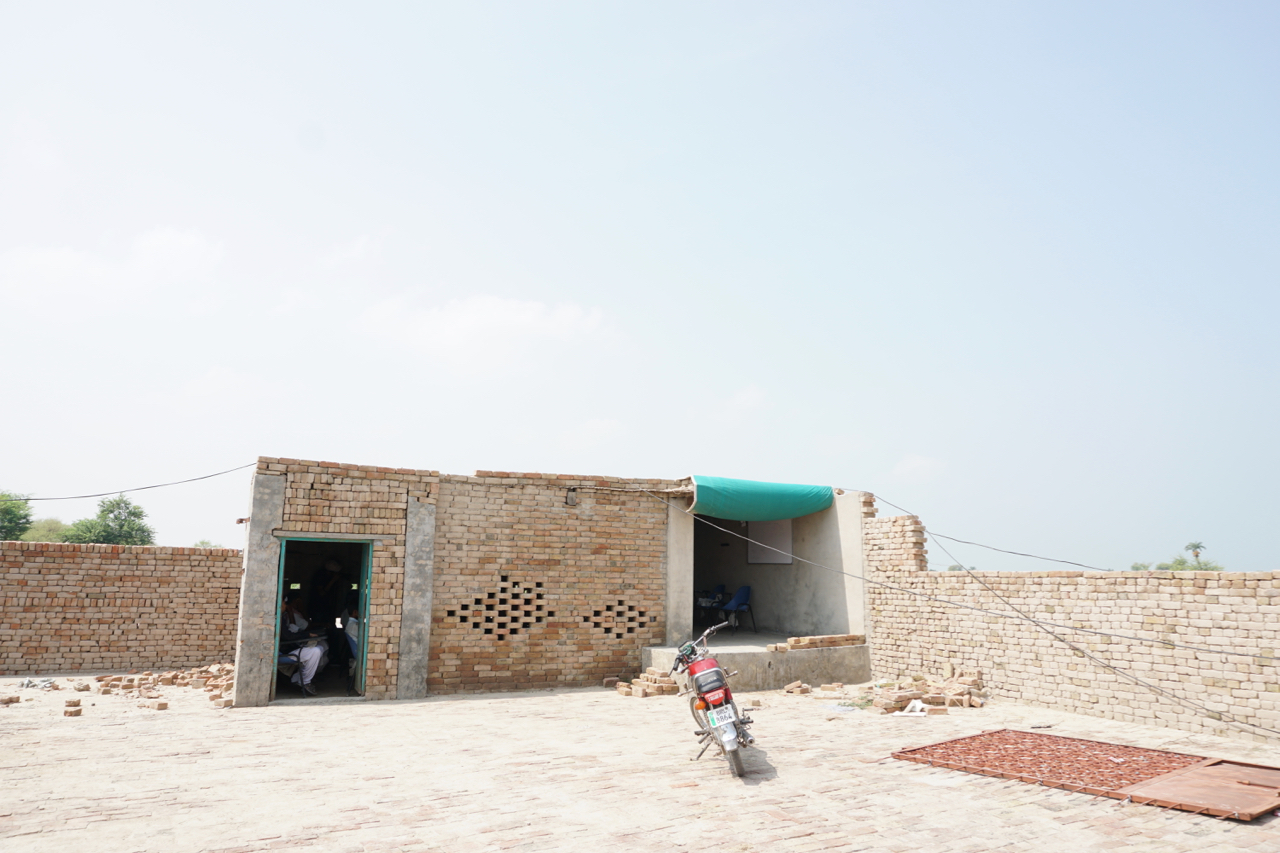Social Protection in Fragile States
Despite various challenges, social protection is more important than ever right now for fragile countries that already house a large share of the world’s poor.

Photo from an EPoD field visit to Punjab, Pakistan. 2017.
The World Bank is estimating that the COVID-19 crisis has the potential to push about 40-60 million more people into extreme poverty, erasing decades of anti-poverty efforts. The World Bank has documented that about 75% of fragile countries have announced COVID-19-related social protection efforts. But, even larger-scale social assistance spending, as well as policies to ensure stable food systems, are needed to help prevent a humanitarian disaster.
This brief discusses the importance of social protection policies in addressing the economic impacts of COVID-19 in fragile states and makes suggestions on how policymakers can overcome the challenges of implementing them.
Social protection aims to provide financial assistance to a country’s most vulnerable populations.
It encompasses a wide variety of programs falling under three broad categories: social safety nets for the very poor, social insurance, and active labour market policy. Safety nets could include programs such as in-kind or cash transfer programs. Social insurance includes pensions, health insurance, and unemployment insurance. Active labour market policy may include minimum wage programs, wage subsidy programs, or skills training to transition workers from non-productive to growing industries.
Social protection is generally more challenging to administer in developing countries than in developed ones.
This is, in part, due to the fact that more workers in developing countries are informal, making it challenging both to conduct outreach and to assess income status to determine need. Limited budgets, weaker government institutions, audit mechanisms, and formal financial systems to deliver assistance also all contribute to challenges in delivery of social protection mechanisms.
Fragile countries face additional challenges in social protection delivery.
First, fragile countries, particularly those with a higher level of fragility and on-going conflict, faced worse economic conditions going into the COVID-19 crisis1. Second, fragile countries tend to have weaker and unstable public and private institutions, making the process of designing and implementing longer-run systems more challenging2.Third, depending on the particular nature of the conflict, they may also have non-inclusive political or social service systems, and the most vulnerable may be most likely to be outside the net of the formal government systems. Finally, trust in government may be very low, so making tough decisions on who should receive assistance could potentially further erode trust or exacerbate existing internal conflicts.
Despite these challenges, social protection is more important than ever right now, particularly for fragile countries that already house a large share of the world’s poor.
The World Bank is estimating that the COVID-19 crisis has the potential to push about 40-60 million more people into extreme poverty, erasing decades of anti-poverty efforts. The World Bank has documented that about 75% of fragile countries have announced COVID-19-related social protection efforts3. But, even larger-scale social assistance spending, as well as policies to ensure stable food systems, are needed to help prevent humanitarian disaster.
How should social protection be expanded in fragile countries?
Looking at the 49 countries defined by DFID as having high, moderate, or low levels of fragility in 2017, there is a large amount of diversity in income levels, level of conflict, institutional structures, and social assistance spending. One must assess the individual needs of different countries in structuring the design of assistance programs, as well as their different capacities for financing and delivery of programs.
Nonetheless, we offer a few discussion points to structure these needs assessments:
Determine whether you first need relief efforts, and then further develop social protection programs to address longer-run economic recession:
-
This is not a normal recession—given public health concerns, about a third of fragile countries have implemented some form of lockdown during this crisis period, shutting down large portions of the economy. While many countries have re-opened, the nature of this conflict may mean that countries need to quickly disburse emergency relief measures (e.g., emergency food distributions, a temporary universal cash transfer) if some forms of lockdowns are re-introduced.
-
Once the immediate need is met, broader, longer-run policies can also be quickly introduced to help provide income support to the newly vulnerable, help transition workers from economically weak job sectors to potentially important new sectors, etc.
Utilize existing programs when you are able to:
-
There is often a desire to introduce new social programs, given the known challenges and weakness in existing structures. However, designing and launching new programs during an emergency—bringing people together to design the program, hiring and training local staff, creating the right community engagement around the program—may be challenging given the public health need to minimize travel and gatherings. Take stock of existing programs, despite their imperfections, and determine what kinds of simple changes can be made to improve and expand them. For example, one might increase the amount disbursed in current cash transfer programs and/or expand eligibility to a larger group of individuals through more flexible targeting systems (discussed below). Similarly, given that elderly households are particularly vulnerable and need to practice greater social distancing, topping up pension accounts and reducing the age of access may help funnel assistance to these groups.
Understand that the newly vulnerable may be different and may, therefore, need different programs to maintain a basic standard of living:
-
Many of the vulnerable are traditionally located in remote, rural villages, and social assistance has often been geographically targeted to these areas. For many programs worldwide, transfers provide small top-ups to existing consumption. But, COVID-19 may disproportionally affect urban areas, given higher levels of international travel exposure, population density, and more strongly enforced stay-at-home or lockdown policies. Many of the newly vulnerable may come from the urban, middle class, who may not necessarily have accessed social protection programs before. With nearly half of the population of fragile countries located in urban areas, this may comprise a large share of the newly vulnerable. Given housing and urban food costs, the transfer level needed to provide a basic standard of living may be higher than in traditional programs that target those engaged in rural agriculture. Thus, if they do not exist, new programs for the urban working class may be of high priority to launch.
Introduce flexible targeting systems to increase access:
-
Many transfer programs rely on infrequently conducted proxy-means tests to determine eligibility for social assistance. These methods, while not perfect, are not necessarily bad for identifying the systematic poor for long-run assistance. However, they are not good at quickly capturing those who have recently experienced an income shock. Given the extent of the crisis, prioritizing the reduction of exclusion error over inclusion error may be important. Short-run universal systems—or universal within geographically targeted areas—may be necessary if a large enough fraction needs social assistance and financing permits; this may be particularly true in conflict areas where the most vulnerable may be left out of targeting systems. For many fragile countries, particularly middle-income countries, targeting assistance through more flexible systems—such as community targeting, on-demand systems, or administrative datasets (e.g., phone records, electricity records)—could help improve access.
Ensure sufficient financing ability for a protracted shock:
-
There is a lot of uncertainty regarding the pandemic, but most economists would agree that we are in for a protracted and potentially quite severe economic recession. In 2018, fragile countries spent on average about 1.38% of GDP on social safety net programs. This will need to be greatly increased, at a time when governments are also experiencing reduced tax collection and have increased health spending needs. (For context, the U.S. has spent at least about 10% of GDP on the economic stimulus).
-
In determining their levels of fiscal spending, countries need to balance tax policies to provide relief to businesses, but also ensure sufficient fiscal space to provide needed assistance throughout the crisis. Ensuring macroeconomic stability is also important, meaning that inflationary financing of public deficits should also be minimized.
-
There is an important role for the international community. The annual level of ODI is roughly 26% the level of tax revenue collected in fragile countries (compared to 2.3% in non-fragile, non-high-income countries). Increased foreign assistance may be necessary to make up for reduced tax collections and increased social protection needs.
Ensure effective food systems4:
-
Cash transfers and other forms of assistance may not be enough if agricultural systems and markets break down. Importantly, farmers may need cash assistance prior to planting to ensure adequate food supplies, especially if local banks and moneylenders are financially constrained due to the economic downturn. Setting up continual data systems to assess food distribution bottlenecks may be important for ensuring market access.
Introduce complementary policies for social insurance:
-
In addition to formal social insurance structures, informal social insurance—particularly within family structures— plays an important role in many countries. Some of these forms of social assistance may collapse—for example, in fragile countries, remittances received equated to about 9% of GDP in 2018, but travel restrictions are leading these to dry up. Complementary policies to support informal insurance mechanisms may be important. For example, migration often provides economic insurance during downturns: the urban poor migrate back to home to rural areas upon job or business loss. However, given the public health concerns, there is a worry that migration will cause disease spread. Understanding whether and how a country can allow for safe transport and migration may be important in allowing existing informal insurance mechanisms to function.
-
This brief originally published by the International Growth Centre.
1 The average GDP per capita of fragile countries was USD $2039.19 in 2018, compared to $5337.75 in non-fragile, non-high-income countries.
2 For example, digital transfers could reduce leakage and potentially be more compliant with social distancing than cash distributions. But in fragile countries, the average percent of the population (aged 15+) that owned a bank account with a financial institution or mobile money service provider was 37% in 2017, compared to 54% in non- fragile, non-high-income countries.
3 Countries with high fragility levels are less likely to have implemented COVID-19 related social protection expansions (58%) than those with moderate (93%) or low (81%) fragility.
4 Note that the average percent of employment in agriculture is 43% in fragile countries, versus 27% in non-fragile, non-high-income countries—this underscores the importance of ensuring functioning agricultural systems in maintaining livelihoods in fragile countries.







